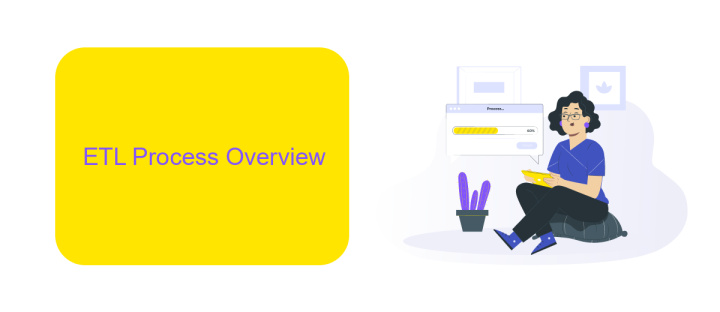Census Data ETL
Extract, Transform, Load (ETL) processes are essential for managing and analyzing census data. They enable the efficient extraction of raw data from various sources, its transformation into a usable format, and its loading into a data warehouse. This article explores the critical steps and best practices for implementing ETL processes to ensure accurate and timely census data analysis.
Introduction
The process of extracting, transforming, and loading (ETL) census data is crucial for various analytical and operational purposes. Census data, which includes demographic, economic, and social information, is essential for government planning, policy-making, and business strategies. Efficiently handling this data ensures accuracy and reliability in decision-making processes.
- Extraction: Gathering raw data from various sources.
- Transformation: Cleaning and converting data into a usable format.
- Loading: Importing the transformed data into a target database or data warehouse.
Modern ETL solutions, such as ApiX-Drive, facilitate seamless integration and automation of these processes. ApiX-Drive allows users to connect various data sources and automate data workflows without requiring extensive technical expertise. This enhances the efficiency and accuracy of census data management, enabling stakeholders to focus on analysis and decision-making rather than data handling complexities.
ETL Process Overview

The ETL (Extract, Transform, Load) process for Census Data involves three primary stages. Firstly, data extraction is performed where raw census data is collected from multiple sources such as government databases, surveys, and other public records. This stage is crucial as it ensures that the data is gathered in its most raw and unaltered form, providing a solid foundation for subsequent transformations. Tools like ApiX-Drive can be utilized to streamline this data extraction process, enabling seamless integration with various data sources and ensuring that data is pulled accurately and efficiently.
Next, the transformation stage involves cleaning, normalizing, and enriching the extracted data. This step is essential to make the data consistent and usable for analysis. Data is often transformed using various techniques such as filtering out duplicates, handling missing values, and converting data types. Finally, in the loading stage, the transformed data is loaded into a target data warehouse or database where it can be accessed for reporting and analysis. The entire ETL process is designed to ensure that the data is accurate, reliable, and ready for use in decision-making processes.
Data Extraction

Data extraction is a crucial step in the Census Data ETL process, as it involves retrieving data from various sources to be processed and analyzed. This step ensures that the data collected is accurate, relevant, and comprehensive for the subsequent transformation and loading stages.
- Identify data sources: Determine the various sources of census data, which may include national databases, surveys, and administrative records.
- Set up data connectors: Utilize tools like ApiX-Drive to establish connections with these data sources, ensuring seamless and automated data retrieval.
- Extract data: Use the configured connectors to pull data from the identified sources, ensuring the data is up-to-date and correctly formatted for further processing.
By leveraging services like ApiX-Drive, organizations can streamline the data extraction process, reducing manual effort and minimizing the risk of errors. This enables a more efficient and reliable ETL workflow, ultimately leading to better data-driven decision-making.
Data Transformation

Data transformation is a crucial step in the ETL process, where raw census data is converted into a structured and usable format. This phase ensures that the data is cleaned, normalized, and ready for analysis. By transforming the data, we can derive meaningful insights and make data-driven decisions.
The transformation process involves several steps, including data cleaning, data integration, and data normalization. During data cleaning, we remove any inconsistencies, missing values, and duplicates. Data integration combines data from various sources into a single coherent dataset. Data normalization standardizes the data, ensuring consistency and comparability.
- Data Cleaning: Removing errors, duplicates, and inconsistencies.
- Data Integration: Merging data from multiple sources.
- Data Normalization: Standardizing data formats and structures.
Using tools like ApiX-Drive can streamline the data transformation process by automating the integration and transformation tasks. ApiX-Drive provides a user-friendly interface and supports a wide range of data sources, making it easier to manage and transform census data efficiently. This ensures that the transformed data is accurate, reliable, and ready for subsequent analysis and reporting.
- Automate the work of an online store or landing
- Empower through integration
- Don't spend money on programmers and integrators
- Save time by automating routine tasks
Data Loading
Once the data has been extracted and transformed, the next crucial step is loading it into the target database or data warehouse. This phase ensures that the cleaned and structured data is stored in an organized manner, making it easily accessible for analysis and reporting. It's essential to choose a database that can handle the scale and complexity of the census data. Popular choices include SQL-based databases like MySQL, PostgreSQL, and cloud-based solutions such as Amazon Redshift and Google BigQuery.
To streamline the data loading process, integration services like ApiX-Drive can be employed. ApiX-Drive automates the data transfer, reducing manual effort and minimizing errors. It supports a wide range of data sources and destinations, making it versatile and efficient. By configuring ApiX-Drive to handle scheduled data uploads, organizations can ensure that their census data is always up-to-date. This not only saves time but also enhances data accuracy, enabling more reliable insights and decision-making.
FAQ
What is Census Data ETL?
Why is ETL important for Census Data?
What are the common challenges in Census Data ETL?
How can I automate the ETL process for Census Data?
What skills are required to perform Census Data ETL?
Time is the most valuable resource for business today. Almost half of it is wasted on routine tasks. Your employees are constantly forced to perform monotonous tasks that are difficult to classify as important and specialized. You can leave everything as it is by hiring additional employees, or you can automate most of the business processes using the ApiX-Drive online connector to get rid of unnecessary time and money expenses once and for all. The choice is yours!


